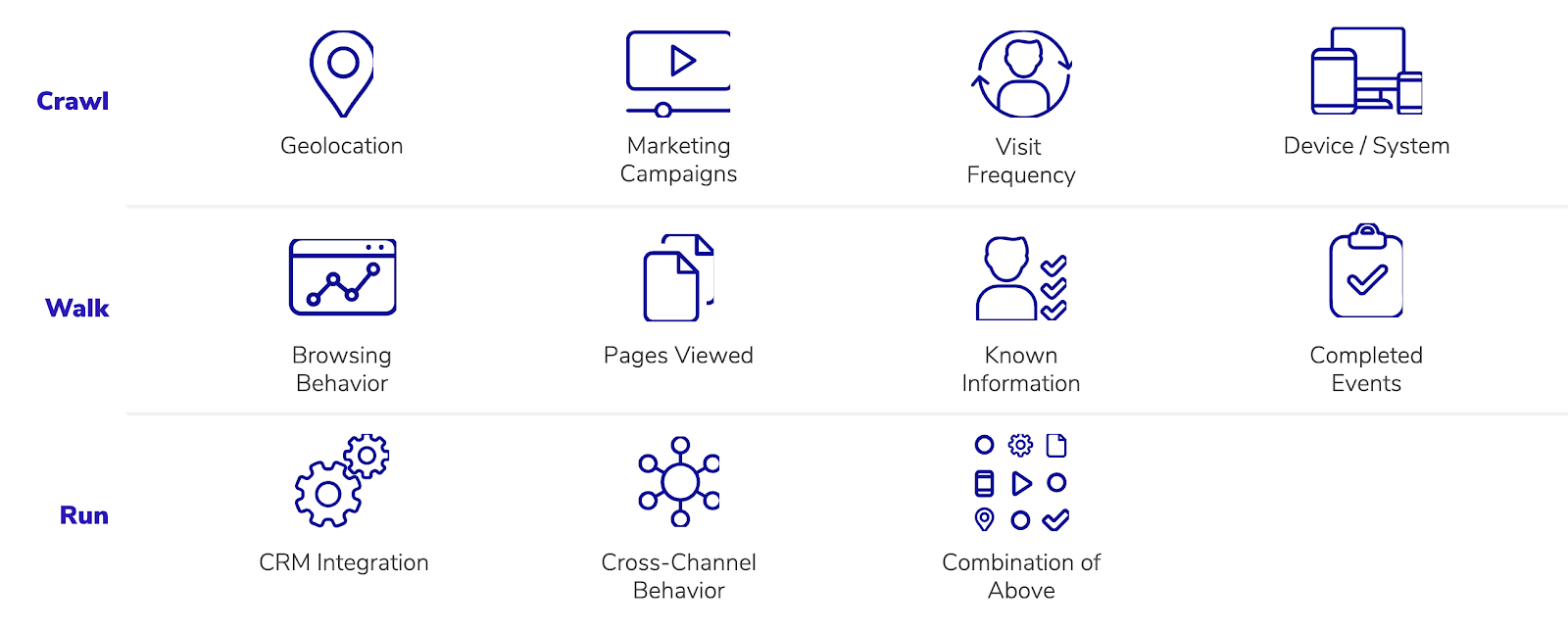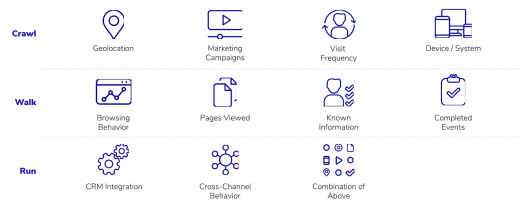Health network shows that yes, personalization is a thing — and it works
Personalization: Everybody’s talking about it. But is anyone doing it?
Indiana-based nonprofit healthcare system Community Health Network (CHN) is leveraging personalization to improve patient experience and communication. That’s saying something considering the strict limits it faces regarding patient privacy thanks to HIPAA regulations.
“We pride ourselves on offering convenient access to healthcare services where and when patients need them — in hospitals, health pavilions and doctor’s offices, as well as workplaces, schools and homes,” said Debbie Kenemer, executive director of digital marketing at Community Health Network. “Our digital properties have to be equally focused on our patients and their needs.”
Community Health Network is the largest Indiana network of primary care physicians, managing over 200 sites of care and affiliates throughout Central Indiana. The network’s continuum of care also integrates hundreds of physicians, specialty and acute care hospitals, surgery centers, home care services, behavioral health and employer health services.
Serving personalized content to patients — and keep up with HIPAA compliance — required CHN to take a “crawl, walk, run” approach that started with getting a better understanding of what types of content are most important to healthcare consumers. To do this, CHN integrated a combination of CRM data, paid social campaigns, to its personalization platform to measure content that different personas were consuming on the same landing page.

The team defined UTM parameters to identify which persona was visiting the landing page and track and measure engagement activities with different content blocks on the page. Their findings revealed that each persona had very different goals based on the calls-to-action they engage.
“Personalization helps us better understand our site visitors and put more relevant and specific information and services in front of them,” Kenemer said.
This data enabled the team to move forward in creating personalized patient journeys that deliver content to the user based on their persona and goals.
Balancing the hype
With consumers increasingly telling brands what they want through digital signals and direct feedback, it makes sense that marketers are focused on delivering personalized messaging and experiences to meet their needs.
“It’s clear that consumers have had enough of irrelevant communication from brands that fail to leverage personal preferences and engagement history,” said John Nash, chief marketing and strategy officer at customer data platform Redpoint Global. “Every buyer expects to be treated as a unique individual.”
Yet despite brands increasingly making room in their martech budgets for personalization technology — Gartner reports 44% of marketing spend is on personalization technology. Research from Forrester backs up Gartner’s findings, but nearly half of the customer management executives surveyed indicated that they do not have the required technology to fully manage customer and prospect data.
One reason for that struggle may be a brand’s own multichannel strategy. When different channels create separate purchase opportunities, marketers can be left to solve data unification issues — a heavy and often costly set of challenges to overcome.
“When you apply personalization to your website and customize media assets for social networks, and then deliver special offers for email, you’re effectively customizing experiences within each channel, but potentially confusing your customers,” said Tony Byrne, founder of Real Story Group. “In practice, you create isolated silos of customer engagement. The result is that customers engage with you differently across channels, at a time when brands like Netflix and Amazon have trained them to expect a more coherent, omnichannel experience.”
Related: Learn from Tony Byrne at MarTech West
In an omnichannel approach — channel owners manage all personalized marketing efforts through a single platform that consolidates customer data from different customer journey touchpoints on different channels and devices, online and off.
Martech is marketing (personalized)
Of course, to make personalization work you need the right infrastructure and martech strategy. In many cases, that is where a solution such as a customer data platform can help marketers consolidate and unify customer data as well as execute omnichannel campaigns through a single platform.
“For years, marketers have had the technical capability to reach and individual in any context, on any channel, at any time,” wrote MarTech Today contributor and Stackla co-founder Peter Cassidy. “But their ‘personalization efforts’ have often been limited to using a customer’s name in a subject line or retargeting an ad based on an item they previously viewed. These tactics may be an improvement from mass advertising, but they feel far from personal.”
Shifting to an approach that considers the different channels, platforms and devices customers use will help to align your brand’s 1:1 messaging wherever they are.
A small team of three digital marketers owns CHN’s personalization efforts from end-to-end. The team is constantly testing and measuring different content variations against their audiences. The tools they use enable the team to scale their execution on a level that helps healthcare consumers and patients to quickly find the resources and local services they need.
Community Health Network was used by patients for over 2 million interactions and over 700,00 doctor’s appointments last year, according to the company’s site.
Marketing Land – Internet Marketing News, Strategies & Tips
(8)



